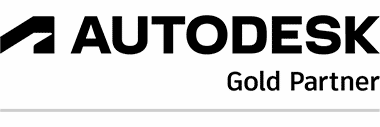
What is space management? And why is it important? Space management and utilization is a concept that should be on every organizational leader’s mind. With rent and real estate prices skyrocketing in desirable cities, there’s never been a better time to figure out whether you’re using all the square footage you’re paying for to the best of its abilities. Even if you don’t operate in an expensive region, unused office space represents a massive point of waste that can easily be resolved when you use facility management software. Learn more about common areas of underutilization in office spaces and see what a smart workplace management software platform like SpaceIQ by Eptura can do for you as you work to make better use of the space you have.
Is Space Management What’s Missing from Your Office?
Empty space is a waste. There may be some circumstances in which the waste is temporary as the available space will be put to use within a defined period of time. But if you have some dead spaces in your office and no plans to add more employees or equipment in the near future, you’re essentially throwing money away every day those spaces go unused.
Some unused offices and spaces are obviously underutilized. Whether it’s an empty private office or a conference room that gets used maybe once or twice a year (and never to its full capacity), these spaces may as well not exist. But they do exist, and you’re paying for them. Identifying these points of underutilization isn’t as much of an issue. The real problem comes from more subtle unused areas. Desks that are occupied only on occasion, conference rooms with motion-detecting lights that seem to have people inside because the lights are always on, reception areas with cozy couches and stacks of magazines that seem vital in theory—these are all spaces that can be deceptively wasteful.
That makes facility management software and facility scheduling software vital to the efficient use of available office space. Subtleties that go unseen are easily detected, recorded and analyzed. You may be surprised by what you find, particularly in these four areas of frequent underutilization.
Private Offices
Getting one’s own office used to be a major hallmark of success at work, but moving up the corporate ladder has different signifiers now than it used to. There may be a few people in an organization who truly need a private office and, in most other cases, the office is a signifier of status. Perhaps that’s why these offices can be so hard to fill. Office equipment manufacturer Herman Miller released a study that revealed private offices remain unoccupied a whopping 77% of the time. What is the use of paying for that square footage if it’s only going to sit empty?
There are so many different reasons why this might be so. The people who are typically considered important enough to merit a private office are usually so high up that they do more than just sit at a desk performing routine tasks. From traveling to conferences to taking advantage of seniority and deciding to work from home or otherwise keeping limited hours in the office, it pays to use space management software to determine who truly uses their private office and who can be satisfied by a desk out on the floor with everyone else. Managers who are particularly engaged with their teams may actually enjoy the change. Herman Miller’s study shows that people actually tend to like working in environments that are more social, having the flexibility to move around. Doing away with private offices for some folks could be a way of introducing mobility to their work lives and allowing for easier collaboration.
Just like disk space management tools that maximize disk space, space management software, also known as facility scheduling software, can ensure space optimization by helping you identify which private offices tend to stay empty the most. The Herman Miller study further indicated that conference room space is rarely used to its full capacity and that smaller collaboration rooms tend to be more popular than large rooms. You could try a strategy of converting some private offices into a meeting or collaborative spaces and using SpaceIQ to track the level of engagement these converted rooms see. If those rooms still remain empty, you may want to consider renting out private offices to solo practitioners or offering those spaces as limited-use private workspaces for employees who need a quiet place to work as they finish an important project. No matter how you try to make use of these private office spaces, A Workplace Management Platform like SpaceIQ will make it easy to determine whether your space utilization solution is actually working out.
Workstations
Individual workstations may be more widely available to a larger percentage of the entire organization, but the fact that these work areas aren’t limited to a select few doesn’t mean their utilization rate tends to be high. In fact, Herman Miller’s study indicates that workstations are occupied only 60% of the time, which is only a 17% improvement on private offices. That makes these spaces well worth watching and analyzing.
If you tend to see a lot of scattering with workstations that are partially occupied, engage with your teams and find out why this is. It could be that there simply aren’t enough team members in a given department to fill out that group’s designated bank of workstations. When this is the case, consolidating existing teams and perhaps reconfiguring the layout of your workstation areas can be helpful in converting those unused workstations into open desks that can be rented out to small companies or startups. You can also take your open desks as a sign that it’s time to reconsider your approach to staffing. With all that space available, why not expand? Ask department heads if they feel they could use some more help. In some cases, underutilization is actually an indication of understaffing. If filling those seats can help defray the cost of the wasted rent you’ve been paying for that space, all the better.
It also pays to take a look at how your employees tend to treat their time in the office. If your organization is one that allows work flexibility for some or all employees, assigned seating may not make sense. Keeping a dedicated desk for a developer who lives two hours away from the office and only comes in for a few hours on Tuesdays and Thursdays doesn’t make much sense. Instead, you can analyze who’s in the office when and make a determination on whether open seating would be a better idea for your organization. Organizations that only offer flexibility for a limited number of employees can either seat the telecommuters separately from everyone else, providing an open-seating workstation area and assigned seating for everyone else or convert to a 100% open arrangement for everyone regardless of flexibility status. Some departments may prefer to sit together but leave one seat open for various team members who may come in on different days.
No matter how you approach the issue, collecting data on which of the workstations in your office are used the most often and which are lonely and waiting to live up to their potential will give you a much better foundation from which to approach the workstation under-utilization issue than simple human observation alone.
Conference and Meeting Rooms
As mentioned above, large conference room spaces are often less important than we tend to think they are. If you aren’t giving large-scale presentations in that room more than once or twice a year, it may be time to rethink how you use that space. First, though, it’s important to collect some data. You may never see people in those rooms, but it could be that teams gather in your large conference room on a regular basis without drawing notice.
You’ll also want to see how many people tend to use these spaces on average. Herman Miller’s study indicated that even when they’re used, fewer people than the full capacity tend to occupy meeting and conference rooms. If the number of people meeting in your largest conference room could easily fit into the smallest with room to spare, some reconfiguring may be in order. Perhaps there’s not enough room to add the workstations you need, but if you move the water cooler and coffee maker into the conference room and turn it into more of a lounge space, you’ll still have a smaller conference room of sufficient space to accommodate everyone who tends to use it. Knowing which spaces are used too much and which aren’t used enough—particularly spaces with a large footprints such as a large conference room—gives you the room to get creative with your space management strategy.
The ability to tell which workstations aren’t getting used in an open seating arrangement can also help you address some employee satisfaction or comfort issues. Perhaps there’s a bank of workstations that are just a little bit too close to the bathroom. It could be that the majority of the people in your offices have tried the standing desk thing and found that they’d rather just sit, leaving your standing desk workstations dramatically underutilized. Pairing the data you collect with a Workplace Management Platform with discussions with or surveys of your employees can help you address the reasons behind under utilization and allow you to create a more comfortable and desirable office environment.
Alternatively, you can use this real estate forecasting information as part of your move management approach. You might have an underutilized conference room in your current space, but if you’re planning a move, there’s no need to make any big changes. However, this can inform your approach to the features your new space should have. No need to pay for another giant space that’s not going to get used.
Break and Reception Spaces
Conventional wisdom holds that an office should have a place for employees to eat their lunches and that there should also be a dedicated space for welcoming guests. However, these spaces may not get used very much and, if you have both an underused employee break space and a reception space that sees guests maybe once or twice a month, you can consider doing away with one or both of these spaces. In fact, if you have underutilized reception areas, break rooms and large conference rooms, you can think about turning the large conference room into a dedicated lounge space in which employees can put their feet up for a minute or guests can sit and wait in comfort without feeling like they’re in a fishbowl.
This may not work for the way you do business and that’s fine. The important thing is that you have the ability to use data as part of your approach to a new space utilization strategy.
Consolidating and Reimagining
Underutilization isn’t always as cut and dry as the categories above imply. There can be little areas here and there that simply don’t justify the money you pay for them. In some cases, it may simply be the cost of doing business, but it’s hard to know exactly how much of that space you have and how much available space you could create without a space management software program to give you an informed high-level view of what’s going on in the space.
One thing to also consider is that the use of lounge-style workspaces is an increasingly common element of the modern workplace. These are often multi-purpose spaces with configurable elements such as movable walls and configurable furniture that can support a variety of work postures. Companies can use these spaces for everything from all-hands meetings to industry presentations. When they’re not in use for group events, these lounge areas serve as causal places employees can sit and work together, eat their lunches or get a quick change of environment as they tease out a complex problem. Going for a multi-purpose approach can flip the issue of underutilization on its head. Consolidate the spaces that are currently unused and make room for a large multipurpose space. If you aren’t using it much, consider opening your doors for non-profits relating to your industry to host educational events or recruitment events for kids. That’s a valuable use of the space even if it isn’t directly contributing to your bottom line.
SOURCE Noam Livnat, Chief Product & Innovation Officer, SpaceIQ



